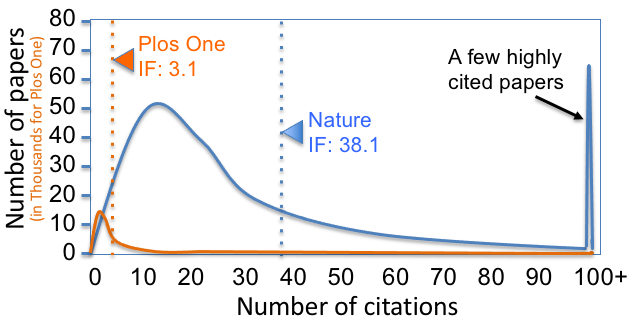|
Journal Of Vertebrate Paleontology
The ''Journal of Vertebrate Paleontology'' is a bimonthly peer-reviewed scientific journal that was established in 1980 by Jiri Zidek (University of Oklahoma). It covers all aspects of vertebrate paleontology, including vertebrate origins, evolution, functional morphology, taxonomy, biostratigraphy, paleoecology, paleobiogeography, and paleoanthropology. The journal is published by Taylor & Francis on behalf of the Society of Vertebrate Paleontology. According to ''Journal Citation Reports'', the journal has a 2017 impact factor The impact factor (IF) or journal impact factor (JIF) of an academic journal is a scientometric index calculated by Clarivate that reflects the yearly mean number of citations of articles published in the last two years in a given journal, as ... of 2.190. References External links * Paleontology journals Publications established in 1980 Quarterly journals English-language journals Taylor & Francis academic journals {{paleontolo ... [...More Info...] [...Related Items...] OR: [Wikipedia] [Google] [Baidu] |
Lars Werdelin
Lars Werdelin (born 1955) is a Swedish paleontologist specializing in the evolution of mammalian carnivores. One area of interest has been the evolutionary interaction of carnivores and hominins in Africa. He received his Ph.D. from Stockholm University Stockholm University ( sv, Stockholms universitet) is a public research university in Stockholm, Sweden, founded as a college in 1878, with university status since 1960. With over 33,000 students at four different faculties: law, humanities, s ... in 1981. References Swedish paleontologists Stockholm University alumni 1955 births Living people Place of birth missing (living people) Date of birth missing (living people) {{Sweden-scientist-stub ... [...More Info...] [...Related Items...] OR: [Wikipedia] [Google] [Baidu] |
Taxonomy (biology)
In biology, taxonomy () is the scientific study of naming, defining ( circumscribing) and classifying groups of biological organisms based on shared characteristics. Organisms are grouped into taxa (singular: taxon) and these groups are given a taxonomic rank; groups of a given rank can be aggregated to form a more inclusive group of higher rank, thus creating a taxonomic hierarchy. The principal ranks in modern use are domain, kingdom, phylum (''division'' is sometimes used in botany in place of ''phylum''), class, order, family, genus, and species. The Swedish botanist Carl Linnaeus is regarded as the founder of the current system of taxonomy, as he developed a ranked system known as Linnaean taxonomy for categorizing organisms and binomial nomenclature for naming organisms. With advances in the theory, data and analytical technology of biological systematics, the Linnaean system has transformed into a system of modern biological classification intended to reflect the ... [...More Info...] [...Related Items...] OR: [Wikipedia] [Google] [Baidu] |
Quarterly Journals
A magazine is a periodical publication, generally published on a regular schedule (often weekly or monthly), containing a variety of content. They are generally financed by advertising, purchase price, prepaid subscriptions, or by a combination of the three. Definition In the technical sense a '' journal'' has continuous pagination throughout a volume. Thus '' Business Week'', which starts each issue anew with page one, is a magazine, but the ''Journal of Business Communication'', which continues the same sequence of pagination throughout the coterminous year, is a journal. Some professional or trade publications are also peer-reviewed, for example the '' Journal of Accountancy''. Non-peer-reviewed academic or professional publications are generally ''professional magazines''. That a publication calls itself a ''journal'' does not make it a journal in the technical sense; ''The Wall Street Journal'' is actually a newspaper. Etymology The word "magazine" derives from Arabic ... [...More Info...] [...Related Items...] OR: [Wikipedia] [Google] [Baidu] |
Publications Established In 1980
To publish is to make content available to the general public.Berne Convention, article 3(3) URL last accessed 2010-05-10.Universal Copyright Convention, Geneva text (1952), article VI . URL last accessed 2010-05-10. While specific use of the term may vary among countries, it is usually applied to text, images, or other content, including paper ( |
Paleontology Journals
Paleontology (), also spelled palaeontology or palæontology, is the scientific study of life that existed prior to, and sometimes including, the start of the Holocene epoch (roughly 11,700 years before present). It includes the study of fossils to classify organisms and study their interactions with each other and their environments (their paleoecology). Paleontological observations have been documented as far back as the 5th century BC. The science became established in the 18th century as a result of Georges Cuvier's work on comparative anatomy, and developed rapidly in the 19th century. The term itself originates from Greek (, "old, ancient"), (, (gen. ), "being, creature"), and (, "speech, thought, study"). Paleontology lies on the border between biology and geology, but differs from archaeology in that it excludes the study of anatomically modern humans. It now uses techniques drawn from a wide range of sciences, including biochemistry, mathematics, and engineering. Us ... [...More Info...] [...Related Items...] OR: [Wikipedia] [Google] [Baidu] |
Clarivate Analytics
Clarivate Plc is a British-American publicly traded analytics company that operates a collection of subscription-based services, in the areas of bibliometrics and scientometrics; business / market intelligence, and competitive profiling for pharmacy and biotech, patents, and regulatory compliance; trademark protection, and domain and brand protection. In the academy and the scientific community, Clarivate is known for being the company which calculates the impact factor, using data from its Web of Science product family, that also includes services/applications such as Publons, EndNote, EndNote Click, and ScholarOne. Its other product families are Cortellis, DRG, CPA Global, Derwent, MarkMonitor, CompuMark, and Darts-ip, and also the various ProQuest products and services. Clarivate was formed in 2016, following the acquisition of Thomson Reuters' Intellectual Property and Science Business by Onex Corporation and Baring Private Equity Asia. Clarivate has been g ... [...More Info...] [...Related Items...] OR: [Wikipedia] [Google] [Baidu] |
Impact Factor
The impact factor (IF) or journal impact factor (JIF) of an academic journal is a scientometric index calculated by Clarivate that reflects the yearly mean number of citations of articles published in the last two years in a given journal, as indexed by Clarivate's Web of Science. As a journal-level metric, it is frequently used as a proxy for the relative importance of a journal within its field; journals with higher impact factor values are given the status of being more important, or carry more prestige in their respective fields, than those with lower values. While frequently used by universities and funding bodies to decide on promotion and research proposals, it has come under attack for distorting good scientific practices. History The impact factor was devised by Eugene Garfield, the founder of the Institute for Scientific Information (ISI) in Philadelphia. Impact factors began to be calculated yearly starting from 1975 for journals listed in the ''Journal Citatio ... [...More Info...] [...Related Items...] OR: [Wikipedia] [Google] [Baidu] |
Journal Citation Reports
''Journal Citation Reports'' (''JCR'') is an annual publicationby Clarivate Analytics (previously the intellectual property of Thomson Reuters). It has been integrated with the Web of Science and is accessed from the Web of Science-Core Collections. It provides information about academic journals in the natural sciences and social sciences Social science is one of the branches of science, devoted to the study of society, societies and the Social relation, relationships among individuals within those societies. The term was formerly used to refer to the field of sociology, the o ..., including impact factors. The ''JCR'' was originally published as a part of '' Science Citation Index''. Currently, the ''JCR'', as a distinct service, is based on citations compiled from the '' Science Citation Index Expanded'' and the '' Social Sciences Citation Index''.- - - Basic journal information The information given for each journal includes: * the basic bibliographic information ... [...More Info...] [...Related Items...] OR: [Wikipedia] [Google] [Baidu] |
Paleoanthropology
Paleoanthropology or paleo-anthropology is a branch of paleontology and anthropology which seeks to understand the early development of anatomically modern humans, a process known as hominization, through the reconstruction of evolutionary kinship lines within the family Hominidae, working from biological evidence (such as petrified skeletal remains, bone fragments, footprints) and cultural evidence (such as stone tools, artifacts, and settlement localities). The field draws from and combines primatology, paleontology, biological anthropology, and cultural anthropology. As technologies and methods advance, genetics plays an ever-increasing role, in particular to examine and compare DNA structure as a vital tool of research of the evolutionary kinship lines of related species and genera. Etymology The term paleoanthropology derives from Greek palaiós (παλαιός) "old, ancient", ánthrōpos (ἄνθρωπος) "man, human" and the suffix -logía (-λογία) "study of". Ho ... [...More Info...] [...Related Items...] OR: [Wikipedia] [Google] [Baidu] |
Paleobiogeography
Biogeography is the study of the distribution of species and ecosystems in geographic space and through geological time. Organisms and biological communities often vary in a regular fashion along geographic gradients of latitude, elevation, isolation and habitat area.Brown University, "Biogeography." Accessed February 24, 2014. . Phytogeography is the branch of biogeography that studies the distribution of plants. Zoogeography is the branch that studies distribution of animals. Mycogeography is the branch that studies distribution of fungi, such as mushrooms. Knowledge of spatial variation in the numbers and types of organisms is as vital to us today as it was to our early human ancestors, as we adapt to heterogeneous but geographically predictable environments. Biogeography is an integrative field of inquiry that unites concepts and information from ecology, evolutionary biology, taxonomy, geology, physical geography, palaeontology, and climatology.Dansereau, Pierre. 1957. ... [...More Info...] [...Related Items...] OR: [Wikipedia] [Google] [Baidu] |
Paleoecology
Paleoecology (also spelled palaeoecology) is the study of interactions between organisms and/or interactions between organisms and their environments across geologic timescales. As a discipline, paleoecology interacts with, depends on and informs a variety of fields including paleontology, ecology, climatology and biology. Paleoecology emerged from the field of paleontology in the 1950s, though paleontologists have conducted paleoecological studies since the creation of paleontology in the 1700s and 1800s. Combining the investigative approach of searching for fossils with the theoretical approach of Charles Darwin and Alexander von Humboldt, paleoecology began as paleontologists began examining both the ancient organisms they discovered and the reconstructed environments in which they lived. Visual depictions of past marine and terrestrial communities have been considered an early form of paleoecology. Overview of paleoecological approaches * Classic paleoecology uses data from ... [...More Info...] [...Related Items...] OR: [Wikipedia] [Google] [Baidu] |






